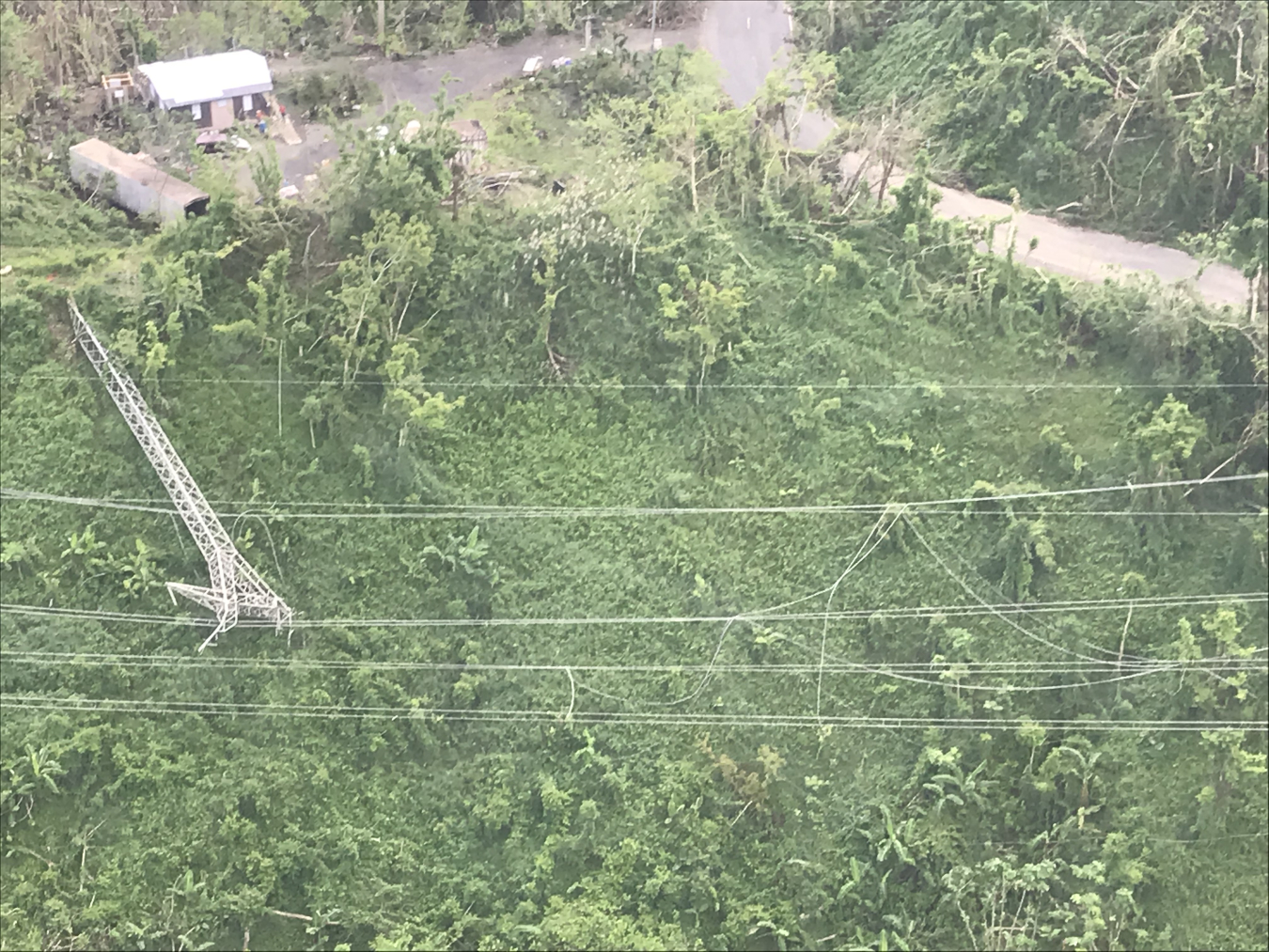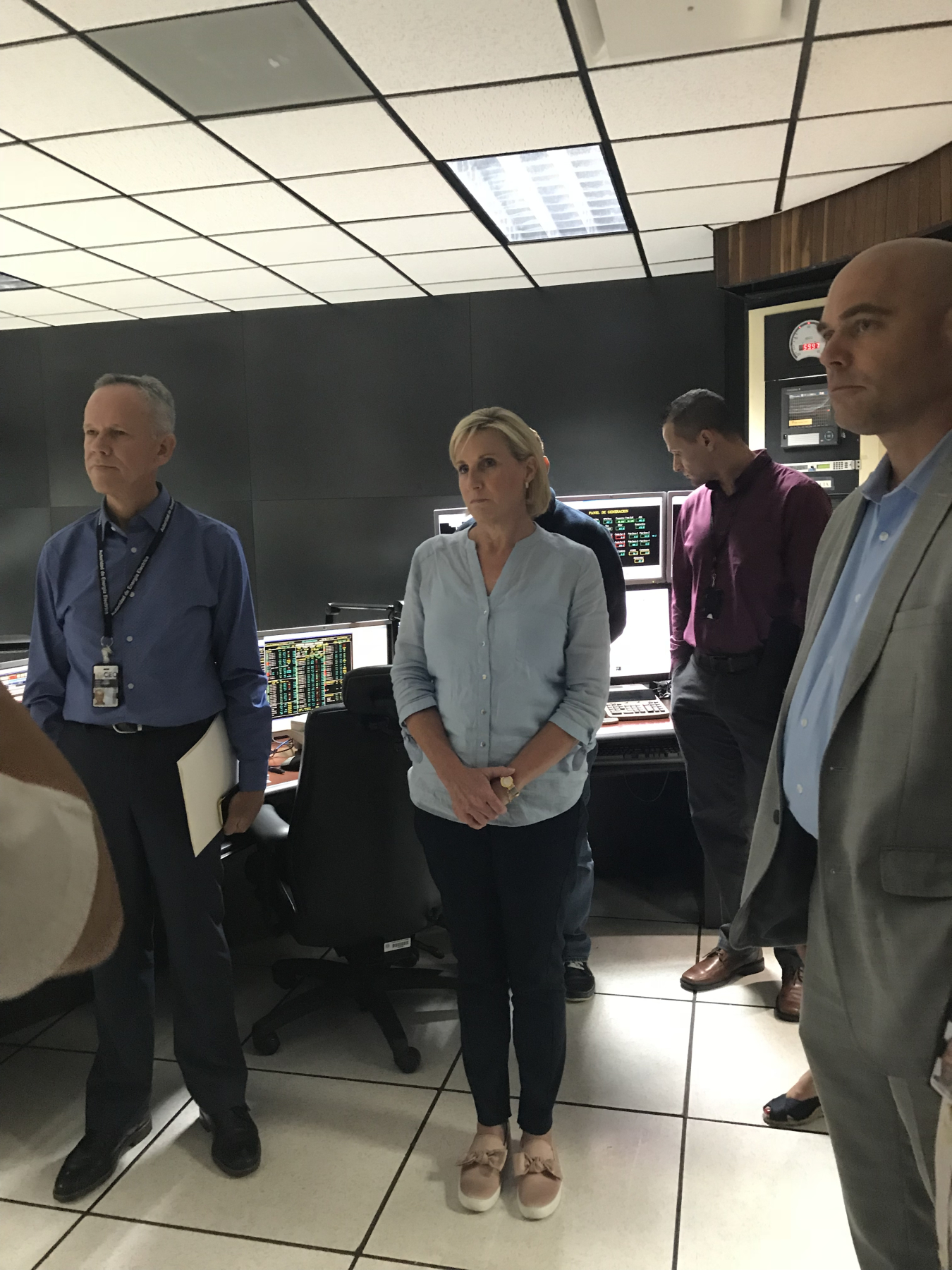I was in Puerto Rico last week on the anniversary of Hurricane Maria to see first-hand the progress that has been made to restore power and increase energy reliability. Energy Secretary Rick Perry discussed in an article last week how Americans came together during the 2017 hurricane season to restore power to those impacted by Hurricanes Harvey, Irma, and Maria. As he noted, the situation that Puerto Rico faced was especially challenging. Within a two-week period, the island was hit first by Irma and then Maria – both of which were Category 5 hurricanes. On September 20, soon after the storm hit, the Puerto Rico Electric Power Authority (PREPA) reported almost 100% of customers in Puerto Rico without power. Faced with this dire situation, federal response, recovery, and restoration efforts kicked into high gear.

Downed power lines in Puerto Rico | Photo courtesy of Department of Energy
Shortly after Secretary Perry swore me in last year, I traveled to Puerto Rico and the U.S. Virgin Islands where I spent more than two weeks coordinating and working on recovery efforts with our partners in the government of Puerto Rico, PREPA, the U.S. Federal Emergency Management Agency (FEMA), industry and the U.S. Army Corps of Engineers (USACE). At that point, when the overall effort was in its early stages, I saw successes, challenges, and opportunities.
And now, one year later, following the hard work and commitment of all those involved in the response, recovery and restoration efforts, I again see successes, challenges, and opportunities. Some of the changes are readily apparent. As soon as I landed on the island, in the more populated areas, I saw people going about their daily lives again—shopping, working, learning—although signs of devastation still exist and additional work still remains.
Over the last year, DOE has provided technical assistance to the island, including our Energy Resilience Solutions for the Puerto Rico Grid report, which the Office of Electricity (OE) released in June, containing recommendations for the Government of Puerto Rico to consider for incorporation into its recovery plans. In addition, OE, with the support of Sandia and Oak Ridge National Laboratories, is evaluating the value of microgrids in providing resiliency to Puerto Rico. Activities such as technical evaluation and analysis of microgrids are supporting the work of the Puerto Rico Industrial Development Company (PRIDCO) with their implementation of several microgrid projects for industrial corridors. (PRIDCO is a unit of the island’s government encouraging economic development.) The labs’ technical expertise and analysis are facilitating the potential deployment of resilient microgrid systems for commercial and industrial customers.
A number of other committed efforts continue here at the Department, including work with the Southern States Energy Board (SSEB), in coordination with the governor and legislature of Puerto Rico to establish a reliable, affordable, and sustainable electric energy grid system, and to advise on energy policy and a regulatory framework. Another effort is grid modeling to support the rebuilding of a more resilient electric power grid system in Puerto Rico. This work will produce a near real-time dynamic model of the Puerto Rico power system that will be used not only as an operational tool, but also for planning purposes.
During last week’s trip, I was also pleased to see first-hand other areas of the island. On Wednesday, I joined U.S. Housing and Urban Development (HUD) Deputy Secretary Pamela Patenaude for a helicopter tour of the island to examine areas where work still needs to be done. Later that day, Deputy Secretary Patenaude and I met with PREPA CEO José Ortiz for a tour of the PREPA control room and a review of OE modeling efforts. I also met with many of our key partners, including Dr. Ahsha Tribble, Deputy Regional Administrator for FEMA Region, for discussions on progress to date, ongoing challenges, and future efforts. The governor’s impressive ceremony that evening highlighted the extraordinary efforts made by so many over the past year. I would like to thank our hosts and everyone who participated in this important first-hand look at the current situation in Puerto Rico and the productive discussions about what comes next.

OE Assistant Secretary Bruce J. Walker with HUD Deputy Secretary Pamela Patenaude and PREPA CEO José Ortiz in the PREPA control room (R-L) | Photo courtesy of Department of Energy
A strong recovery and revitalization are important to Puerto Rico and to the Nation. Maintaining and enhancing the affordability and resilience of the electric grid, will provide service and value to the region. This is a continual process of improvement, one involving a reassessment and adaptation of solutions and technologies to address changing needs. As PREPA and the Commonwealth continue their work to strengthen Puerto Rico’s power grid and increase disaster resilience, DOE, FEMA, and HUD will remain their supportive partners.
